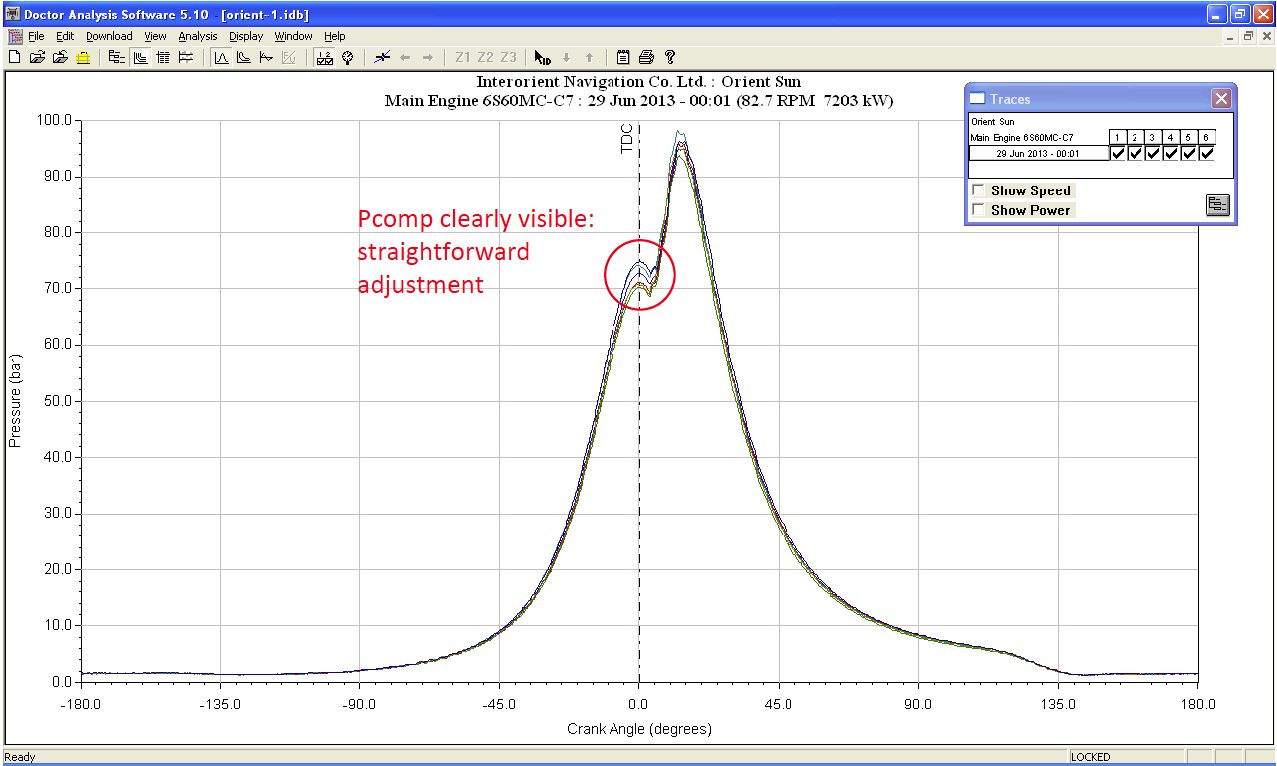To obtain accurate engine power figures from the Doctor system, it is vital that the TDC offset is adjusted accurately. This technical note describes how to carry out this adjustment.
Before measurements are taken with the instrument, attention should be paid to the angular resolution that is being used. Higher angular resolution enables finer adjustment of the TDC offset angle and potentially more accurate power figures. For a main engine and using the DK-2, we recommend a resolution of at least 0.2⁰, and for an auxiliary 0.5⁰. The DK-20 takes all readings at 0.1⁰ resolution so no adjustment is required.
What we are trying to achieve is to align Pcomp at 0⁰ the pressure-angle graph. Late-firing engines are straightforward to adjust as Pcomp is usually clearly visible. The trace below indicated a correctly adjusted engine – the peak of the curve before firing is aligned at 0.

The trace below shows the derivative superimposed on the same graph. You will see that the derivative is equal to zero at Pcomp (ie. the rate of change of pressure is zero at the peak). This is a good way to check that our adjustment is absolutely correct.

Often, Pcomp is not visible as the engine has fired before TDC. The trace below is an example of this. However, we can use the derivative curve to ‘predict’ the zero‐crossing point and make the adjustment accordingly. The trace below shows how an adjustment with the derivative curve extrapolated to zero.

Sometimes engines fire very early and even extrapolation of the derivative curve cannot give a precise adjustment. In this case a good rule is to place the flat part of the derivative curve at ‐12 ⁰. The flat part of the curve indicates where the rise in pressure is starting to roll off towards Pcomp, and this is typically at 12 ⁰ before TDC for four‐stroke medium speed engines. The trace below shows this.

Finally, if you have been adjusting a number of auxiliaries, for example, on one vessel, it is a good idea to overlay the engines you have adjusted to see that the pressure rise on the left side of the trace lines up for all engines.